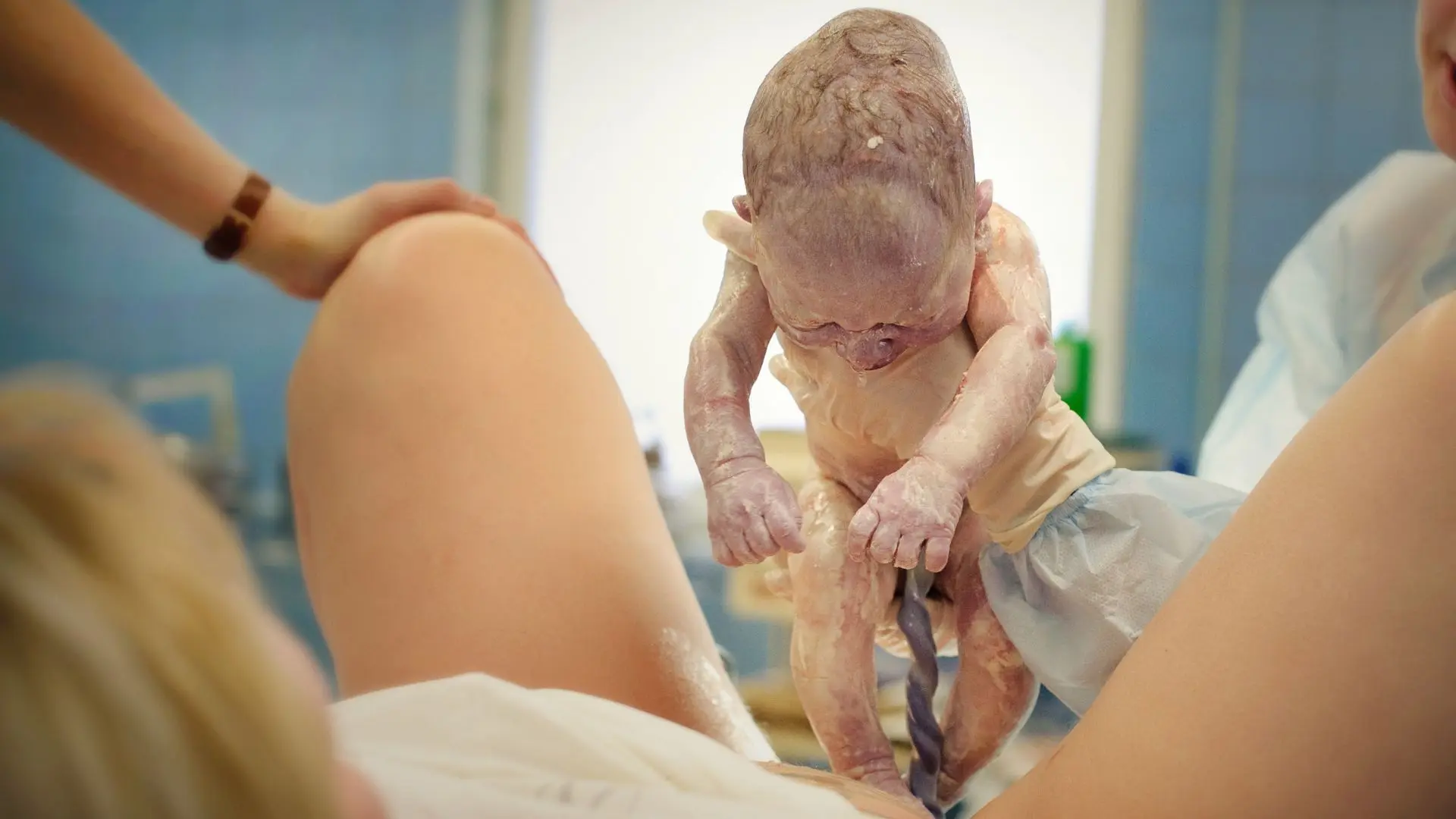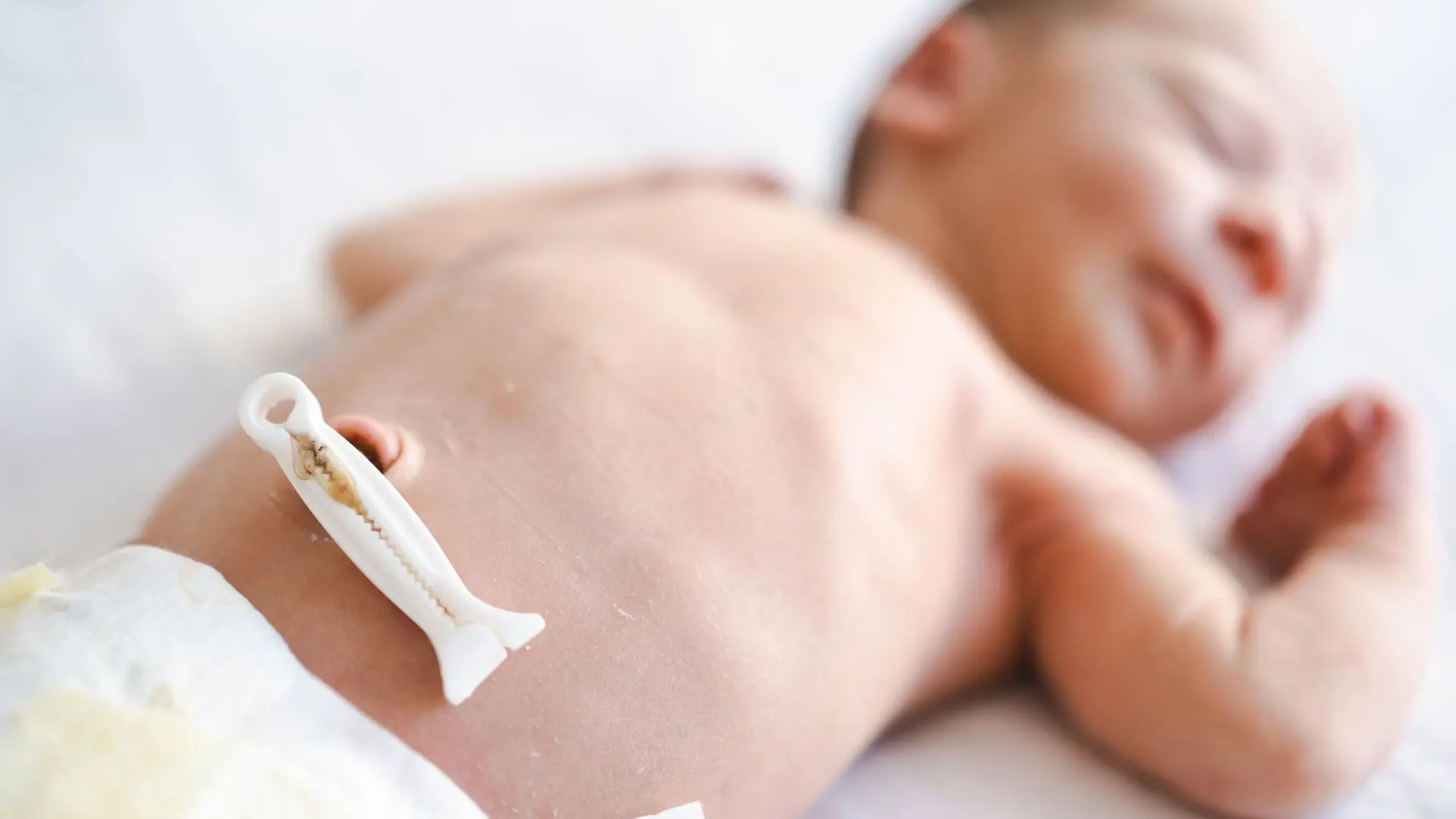Proper care for a healthy umbilical cord is the foundation of your baby’s health and happiness. Learn the 7 signs of proper healing and get expert advice on umbilical cord care.

Healthy umbilical cord care is one of the many new things parents need to understand when welcoming a newborn. Have you ever wondered why your baby’s umbilical cord changes color, or what it means when it dries and falls off?
The process might seem mysterious, but it’s a fascinating journey that your baby’s body goes through right after birth. Ensuring that your baby has a healthy umbilical cord is crucial for their overall well-being.
In this blog, we will unravel the secrets of a healthy umbilical cord, explore the signs you should look for, and provide you with essential tips to keep your baby’s umbilical cord in perfect condition.
Let’s learn the wonders of newborn care and discover how to ensure your baby’s umbilical cord is on the right track to healthy healing.
What is the Umbilical Cord?
The umbilical cord is a lifeline that connects your baby to you during pregnancy. It carries oxygen and nutrients from your placenta to your baby while removing waste products from your baby’s blood.

After birth, the umbilical cord is clamped and cut, leaving a small stump attached to your baby’s belly button. This stump will eventually dry up and fall off, usually within one to three weeks after birth, resulting in a healthy umbilical cord area.
The Transition from Pregnancy to Newborn
Once your baby is born, the umbilical cord no longer serves its purpose and begins the natural process of drying out and detaching. Understanding this transition is crucial for proper umbilical cord care.
The stump goes through several changes as it heals, and being aware of these changes can help you ensure your baby’s umbilical cord remains healthy. Observing a healthy umbilical cord during this period is a positive sign that your baby is adapting well.
Here Are the 7 Signs of a Healthy Umbilical Cord
Proper care of your baby’s umbilical cord is vital to prevent infections and ensure it heals correctly. Here are the key signs of a healthy umbilical cord and what you should look for:

1. Normal Color and Appearance
A healthy umbilical cord stump typically changes color as it dries out. Initially, it may appear yellow-green. As it dries, it turns brown or black.
This color change is a normal part of the healing process. If you notice this change, it indicates that the umbilical cord is drying out as expected, which is a sign of a healthy umbilical cord.
Example: Think of a piece of fruit left out to dry. It changes color as it loses moisture, much like the healthy umbilical cord stump.
2. Drying and Shrinking Process
The umbilical cord stump should gradually dry out and shrink. This process usually begins within a few days after birth. The stump will become harder and less flexible as it dries. This is a good sign that the healing process is on track, indicating a healthy umbilical cord.
Example: Imagine a grape turning into a raisin. As it loses water, it becomes smaller and more shriveled. Similarly, the umbilical cord stump dries and shrinks over time, resulting in a healthy umbilical cord.
3. No Redness or Swelling
Redness and swelling around the base of the umbilical cord stump can indicate an infection. A healthy umbilical cord should not show signs of inflammation. The skin around the stump should remain the same color as the rest of your baby’s abdomen.
Example: Consider how a healing cut on your skin looks. If it’s not infected, the area around the cut remains normal in color and free from swelling. The same applies to the healthy umbilical cord stump.
4. No Foul Odor or Discharge
A healthy umbilical cord should not emit a foul odor or have any discharge. A slight smell as the stump dries is normal, but a strong, unpleasant odor can be a sign of infection.
Similarly, while it is normal for the stump to be moist at the base, there should be no pus or other discharge.
Example: Think of food that is drying out. It might have a faint smell, but it shouldn’t smell rotten. An infected umbilical cord stump can emit a strong, unpleasant odor, indicating it needs medical attention to maintain a healthy umbilical cord.
5. Cord Falls Off Naturally
A healthy umbilical cord stump will fall off naturally within one to three weeks. You might notice a small amount of blood when the stump detaches, which is normal. The key is to let the stump fall off on its own without pulling or tugging at it.
Example: Imagine a leaf falling off a tree. It detaches when it’s ready. Similarly, the umbilical cord stump will fall off naturally when the healing process is complete, ensuring a healthy umbilical cord area.
6. Minimal Bleeding
It’s normal to see a small amount of bleeding when the umbilical cord stump falls off. However, heavy bleeding is a cause for concern. If you notice significant bleeding, contact your pediatrician immediately to ensure a healthy umbilical cord.
Example: Think of a scab that comes off a healing wound. It might bleed a little, but if it bleeds a lot, it could indicate a problem. The same principle applies to the umbilical cord stump in maintaining a healthy umbilical cord.
7. Firm and Dry Texture
As the umbilical cord stump heals, it should feel firm and dry to the touch. If the stump remains moist or soft, it may indicate that it is not healing properly. A healthy umbilical cord stump will become increasingly firm as it dries out.
Example: Consider a piece of dried fruit. It becomes firmer and harder as it loses moisture. The umbilical cord stump should also become firmer as it dries out and heals, indicating a healthy umbilical cord.
Tips for Maintaining a Healthy Umbilical Cord
To ensure your baby’s umbilical cord heals properly, it’s essential to follow these tips for maintaining a healthy umbilical cord:
Keep the Area Clean and Dry
Keeping the umbilical cord stump clean and dry is crucial for preventing infections. Gently clean around the base of the stump with a clean cloth or cotton swab moistened with plain water. Avoid using alcohol or other substances that could irritate your baby’s skin.
Example: Just as you would keep a wound clean to promote healing, the umbilical cord stump should be kept clean and dry to prevent infection, ensuring a healthy umbilical cord.
Avoid Tight Clothing
Dressing your baby in loose-fitting clothing helps ensure the umbilical cord stump has proper air circulation. Avoid tight clothing or diapers that can rub against the stump, causing irritation.
Example: Think of wearing loose, comfortable clothing when you have a cut. It allows the area to breathe and heal. Similarly, loose clothing helps the umbilical cord stump heal properly, promoting a healthy umbilical cord.
Monitor for Signs of Infection
Regularly check the umbilical cord stump for any signs of infection, such as redness, swelling, foul odor, or discharge. If you notice any of these symptoms, contact your pediatrician immediately to maintain a healthy umbilical cord.
Example: Monitoring the umbilical cord stump is like checking a healing wound. If you notice signs of infection, prompt action is necessary to prevent complications and ensure a healthy umbilical cord.
Avoid Submerging in Water
Until the umbilical cord stump falls off, it’s best to give your baby sponge baths instead of submerging them in water. Keeping the stump dry helps prevent infection and promotes healing, resulting in a healthy umbilical cord.
Example: Imagine trying to keep a bandage dry to prevent it from getting wet and contaminated. Similarly, keeping the umbilical cord stump dry is essential for proper healing and maintaining a healthy umbilical cord.
Follow Pediatrician’s Advice
Always follow the guidance provided by your pediatrician for umbilical cord care. They can provide personalized advice and support to ensure your baby’s umbilical cord remains healthy.
Example: Just as you would follow a doctor’s instructions for caring for a wound, following your pediatrician’s advice for umbilical cord care ensures the best outcome for your baby and maintains a healthy umbilical cord.
Conclusion
Ensuring your baby’s umbilical cord heals properly is an important aspect of newborn care. By recognizing the signs of a healthy umbilical cord and following the tips provided, you can help prevent infections and promote healing.
Remember to keep the area clean and dry, avoid tight clothing, monitor for signs of infection, and follow your pediatrician’s advice. With these practices in place, you can be confident that your baby’s umbilical cord is healing as it should, ensuring a healthy umbilical cord.
If you have any concerns about your baby’s umbilical cord care, don’t hesitate to contact your pediatrician for professional advice. Your baby’s well-being is our utmost priority, and we’re here to assist you at every step of the journey.
Remember, proper umbilical cord care is the first step in ensuring your baby’s health and happiness. Take care, and happy parenting!
You may also be interested in : 10 First-Time Mom Tips Covering Your Every Concern